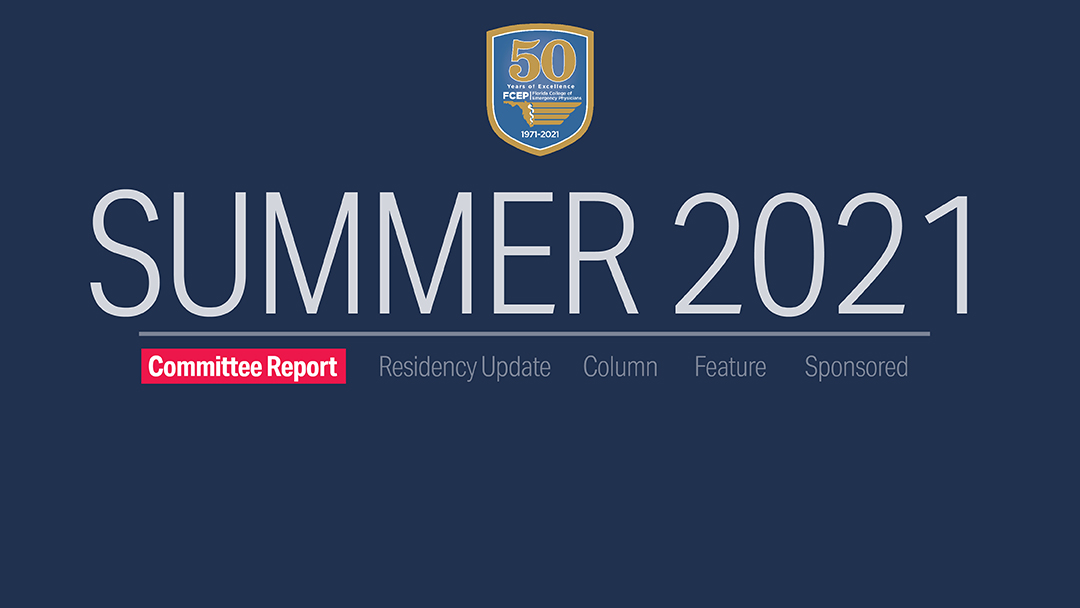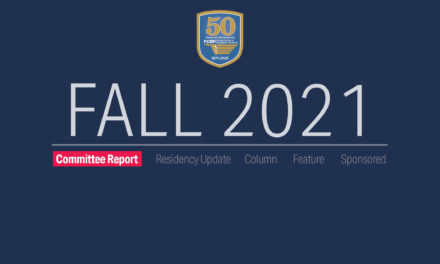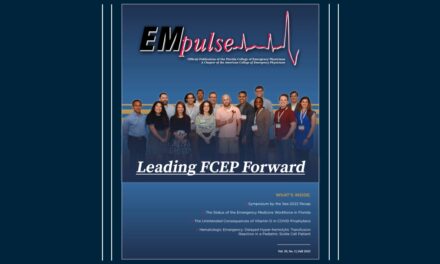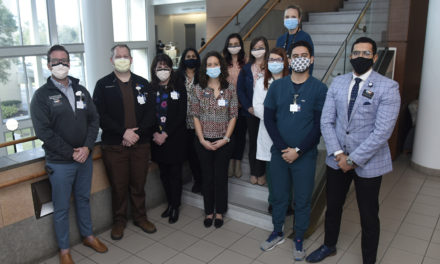Pediatric Committee: Summer 2021
Education
It was a return to in-person learning at the 2021 Emerald Coast Conference in Destin, FL. The 4-day conference (June 7-10) was hosted by the ACEP Alabama and South East State Chapters. Members of the FCEP’s Pediatric Emergency Medicine Committee provided a three-hour immersive, simulation-based workshop at the conference focused on pediatric trauma and non-accidental trauma. Thank you to Drs. Amit Patel, Vanessa Perez, Tricia Swan, Cristina Zeretzke, John Misdary, Carmen Martinez and Shiva Kalidindi for volunteering your time and expertise to make the workshop a success.
Also, coming soon to a conference near you: members of our Pediatric Emergency Medicine Committee will present the sixth annual Pediatric Track at Symposium by the Sea (August 5-8, 2021). This 3-hour workshop will use didactic lectures, small group sessions, and interactive high-fidelity simulation scenarios to bring participants the latest in management of pediatric cardiovascular emergencies (NRP and PALS 2020 guidelines updates, COVID-19 related cardiac complications, approach to neonates with congenital heart lesions in the ED/PED, and more). The Pediatric Track is scheduled for the morning of Saturday, August 7.
We’d like to extend a sincere “Thank You!” to Dr. Shiva Kalidindi for organizing the programs at both the Emerald Coast Conference and Symposium by the Sea.
COVID-19, Vaccinations, and Kids
Over 4 million children have tested positive for COVID-19 in the United States since the start of the pandemic (as of June 17, 2021). [1] Children represented 24.6% (15,763) of new COVID-19 cases for the week of June 10-17, 2021, and account for 14.2% of all U.S. cases since the start of the pandemic. [1] Though children tend to have a mild COVID-19 disease course overall, severe disease and complications do occur. A systematic review of children with confirmed COVID-19 infection found 2% of cases were identified as severe and 0.6% were identified as critical. [2] Further, there have been over 4,000 cases of MIS-C in the United States as of June 2, 2021. [3] The hospitalization rate for children has been 0.8-0.9% so far in 2021 and the mortality rate has been 0.01% for the same time period. [1]
Vaccination against COVID-19 has proven to be an incredibly effective measure to prevent infection and symptomatic disease in adults. The FDA reported in May 2021 that the Pfizer-BioNTech COVID-19 vaccine was found to be “100% effective in preventing COVID-19” for children ages 12-15 years in an analysis of available effectiveness data. [4] An emergency use authorization (EUA) for the Pfizer-BioNTech vaccine was expanded to include children 12-15 years of age on May 10, 2021 (note: an EUA was filed for the Moderna COVID-19 vaccine on June 10, 2021). As of June 23, 2021, over 8.2 million children 12-17 years of age in the United States have received at least one dose of the Pfizer-BioNTech COVID-19 vaccine, and over 5.8 million have received both. [5]
The initial safety data described by the FDA primarily noted adverse reactions to the Pfizer-BioNTech vaccine that included pain at the injection site, headache, muscle pain, fever, chills and fatigue. Anaphylaxis was also reported, though the majority of cases were described in people with a history of allergic reactions. [6] Recently, reports of myocarditis or pericarditis in people receiving an mRNA vaccine, including the Pfizer-BioNTech vaccine, have emerged. As of June 2021, the CDC has confirmed 393 cases of myocarditis or pericarditis in people that have received mRNA COVID-19 vaccines, and are investigating the possible association with mRNA vaccines. Most reported cases have been in males that are 16-30 years of age. Even if a causal link is found between mRNA vaccines and myocarditis or pericarditis, when compared to the potential morbidity and mortality associated with COVID-19, the benefits of vaccination far exceed the potential risks.
Leading health care experts and organizations recommend and encourage COVID-19 vaccination for all eligible individuals 12 years of age and older. [7] A statement expressing this support is available at the American Academy of Pediatrics here.
References:
- American Academy of Pediatrics. Children and COVID-19: State-Level Data Report. (Accessed 6/22/2021)
- Liguoro I, Pilotto C, Bonanni M, Ferrari ME, Pusiol A, Nocerino A, Vidal E, Cogo P. SARS-COV-2 infection in children and newborns: a systematic review. Eur J Pediatr. 2020 Jul;179(7):1029-1046. doi: 10.1007/s00431-020-03684-7. Epub 2020 May 18. Erratum in: Eur J Pediatr. 2021 Jul;180(7):2343. PMID: 32424745; PMCID: PMC7234446.
- Centers for Disease Control and Prevention (CDC). Health Department-Reported Cases of Multisystem Inflammatory Syndrome in Children (MIS-C) in the United States. (Accessed 6/22/21)
- Food and Drug Administration. Coronavirus (COVID-19) Update: FDA Authorizes Pfizer-BioNTech COVID-19 Vaccine for Emergency Use in Adolescents in Another Important Action in Fight Against Pandemic. May 10, 2021. (Accessed 6/23/21)
- Centers for Disease Control and Prevention (CDC). COVID-19 Vaccinations in the United States. https://covid.cdc.gov/covid-data-tracker/#vaccinations. (Accessed 6/23/21)
- Allergic Reactions Including Anaphylaxis After Receipt of the First Dose of Pfizer-BioNTech COVID-19 Vaccine—United States, December 14–23, 2020. CDC COVID-19 Response Team; Food and Drug Administration. MMWR Morb Mortal Wkly Rep. 2020.
- American Academy of Pediatrics. Statement Following CDC ACIP Meeting from Nation’s Leading Doctors, Nurses and Public Health Leaders on Benefits of Vaccination. (Accessed 6/24/21)
This article is part of the following sections:







